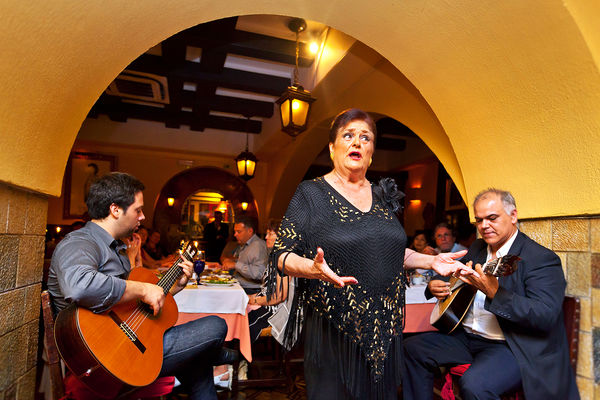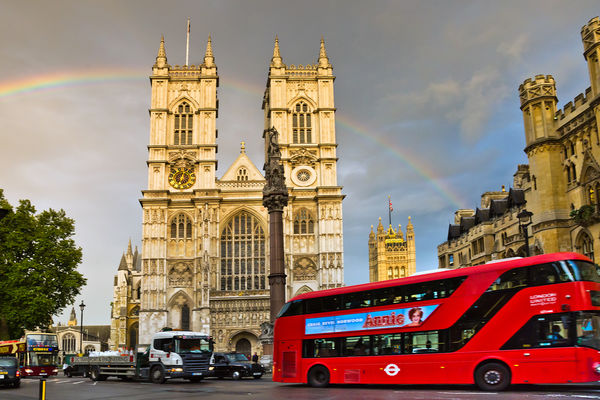Europe’s Timeless Traditions: Four Favorites
By Rick Steves

Europe is a continent of long-lived cultures, with countless treasured traditions that have survived into modern times. While some of Europe's customs live on only as clichés or tacky stage shows for tourists, others — like the four of my favorites described here — are worth going out of your way to take part in.
One of the most well-known European traditions — and something that I absolutely love doing — is gliding through Venice in a gondola.
In the early Middle Ages, hundreds of horses traversed Venice's narrow bridges and alleyways. You can imagine the downside. In the 14th century the beasts were banned, and the noble class embraced watercraft as a more respectable form of transportation. The realities of navigating over the lagoon's shifting sandbars led to the use of uniquely designed flat-bottom gondolas, with captains who stood up in order to see better. By the 1800s, there were 10,000 boats floating through the city's canals.
Today, hopping aboard one of the city's gondolas is a great way to escape the crowds and enter a parallel world of dreamy tranquility, as your vessel slices through your own private Venice, one filled with lonely bridges, canals without sidewalks, and reflections of once-upon-a-time grandeur. Wait until early evening, when the crowds have lessened and the light is right, and you'll experience the full force of Venice's charm from your boat.
In Spain, you can feel the pulse of the Andalucía region through its fast-paced flamenco performances. With flamenco, the intricate rhythms are set by castanets and hand clapping. The men do most of the machine-gun footwork, while the women concentrate on graceful turns and a smooth, dramatic step. The accompanying guitarists, with their lightning-fast strumming, are considered some of the best in the world.
Flamenco is a visual reminder of Andalucía's vibrant mix of cultures. In the singers' raspy voices, you'll hear echoes of the Muslim call to prayer — evocative of the centuries of Moorish rule. And the colorful costumes and sultry, swirling dance moves are courtesy of the Roma people who settled in Spain.
Sevilla is considered by Spaniards to be the art form's epicenter. While it's easy to find tourist-friendly performances on Sevilla's main drags, I find that experiencing flamenco culture celebrated by and for the locals beats any tourist show. Wander the city's backstreets, looking for a neighborhood bar where locals break out into impromptu performances.
Just across the border from Spain is another late-night musical tradition: Portugal's fado music. Fado, which means "fate," is a uniquely Portuguese style of music, with soulful songs that reflect the country's bittersweet relationship with the sea. Many of these bluesy ballads tell of sailors who never returned to port, told (or, more accurately, wailed) by their black-clad widows.
Lisbon's Bairro Alto and Mouraria districts are two great areas where you can catch some informal singing. Coimbra, north of Lisbon, is another great city for fado. While most fado is sung by women, in Coimbra, it's mainly performed by men. Their songs are serenades of love — usually sad, unanswered love. In both cities, you can pay lots of money for a fancy fado show in an upscale neighborhood, but I prefer the free shows you can find in the characteristic and rough-edged neighborhoods. I've stumbled across some of the best fado performances in local bars, where residents line up down the block for their turn to sing.
When I'm in London, I find that enjoying the view from the upper level of a double-decker bus is one of the treats of the city. Along with Big Ben, the bearskin-hatted Queen's Guard, and the similarly red (but now mostly defunct) phone booths, the buses are widely recognized as symbols of London.
This iconic mode of transportation started out in the late 19th century as two-story horse-drawn buggies. Two hundred years later, the buses are still a fun and efficient way to get around London, especially if you're visiting many of the city's top sights. On the popular route 15 — which goes from Trafalgar Square to St. Paul's Cathedral to the Tower of London — you even have a chance of getting picked up by a heritage "Routemaster" old-style double-decker. (Keeping with the times, a few buses in the fleet are electric, too.)
On Sundays, when most sights in London are closed, climbing the stairs and grabbing a seat in a bus's upper deck is a good way to get an overview of the city and spend an otherwise unoccupied afternoon. The buses are also great for families on holiday, providing an exciting ride for kids…and some stress-free downtime for parents.
Even if you're more of an off-the-beaten-track traveler, consider taking part in some of these cultural mainstays — after all, they've survived this long for a reason.

